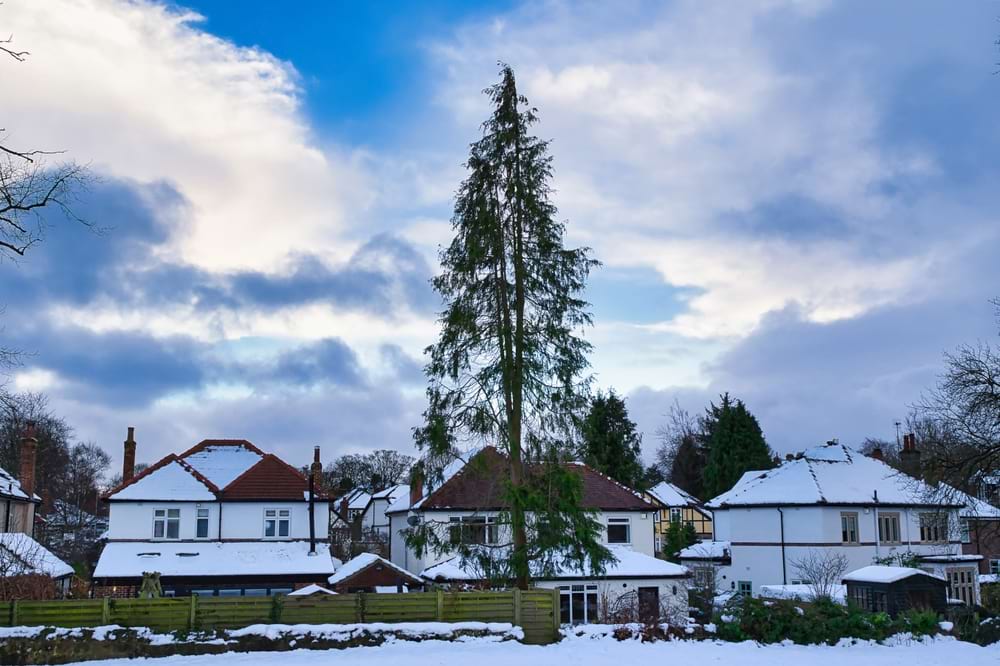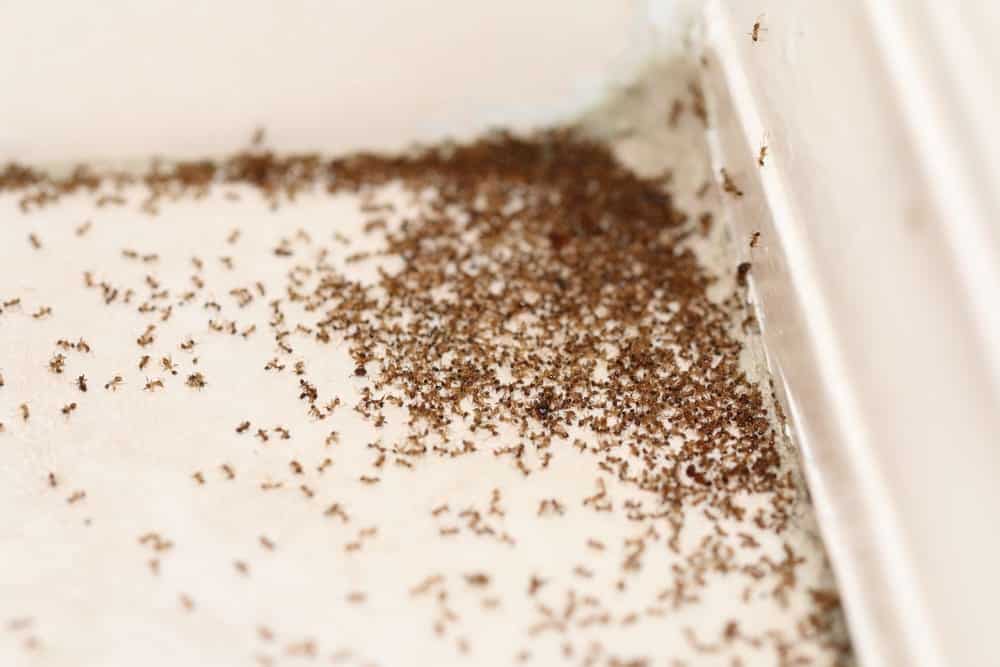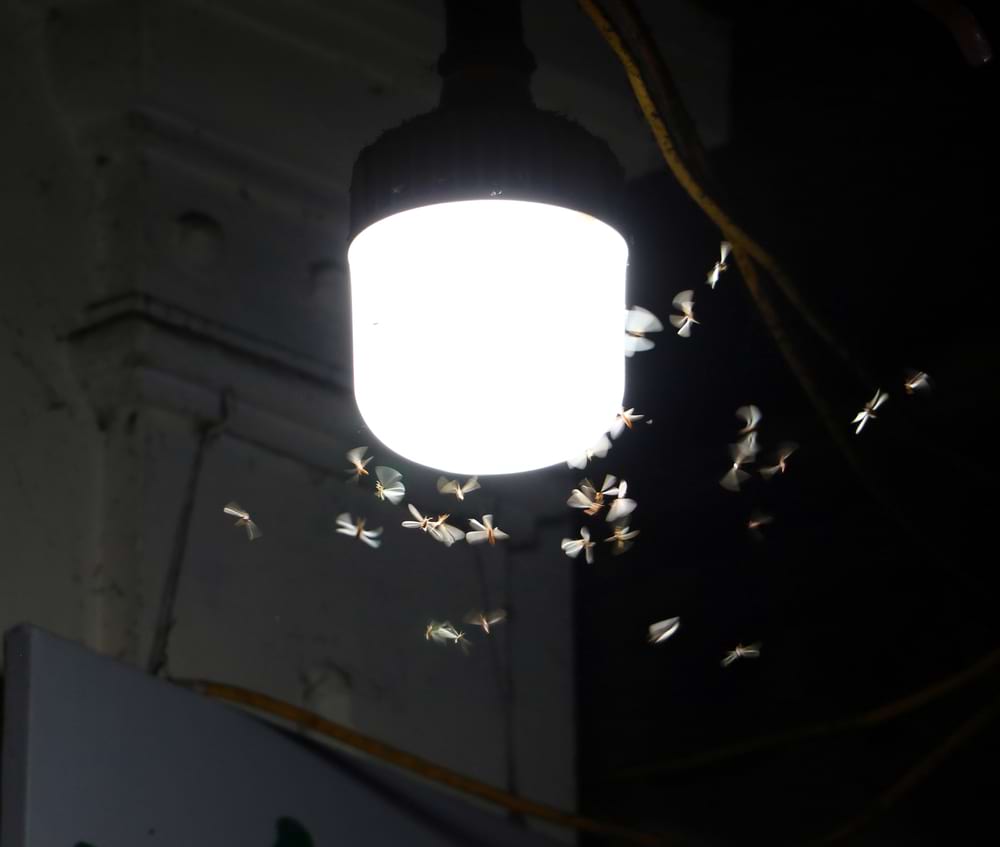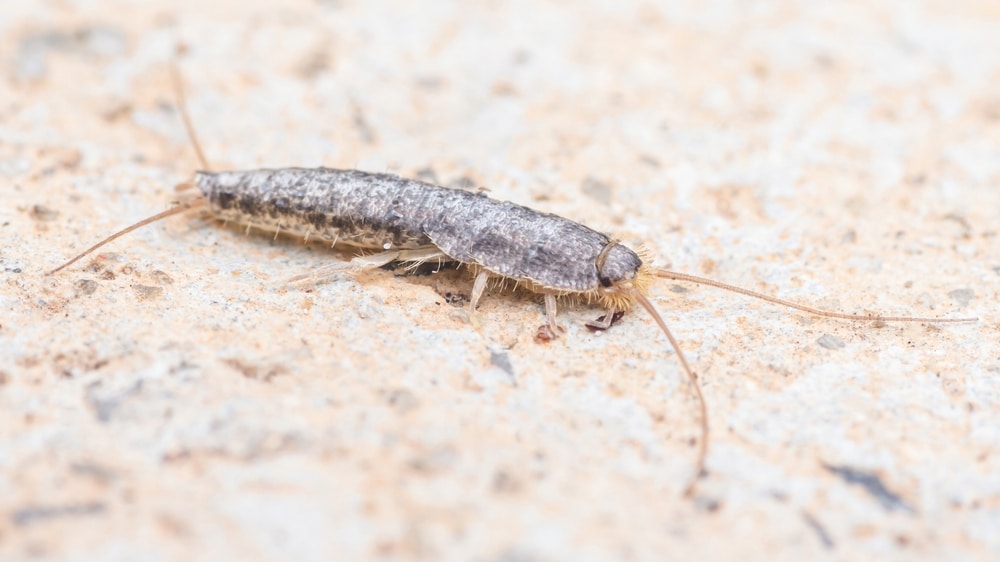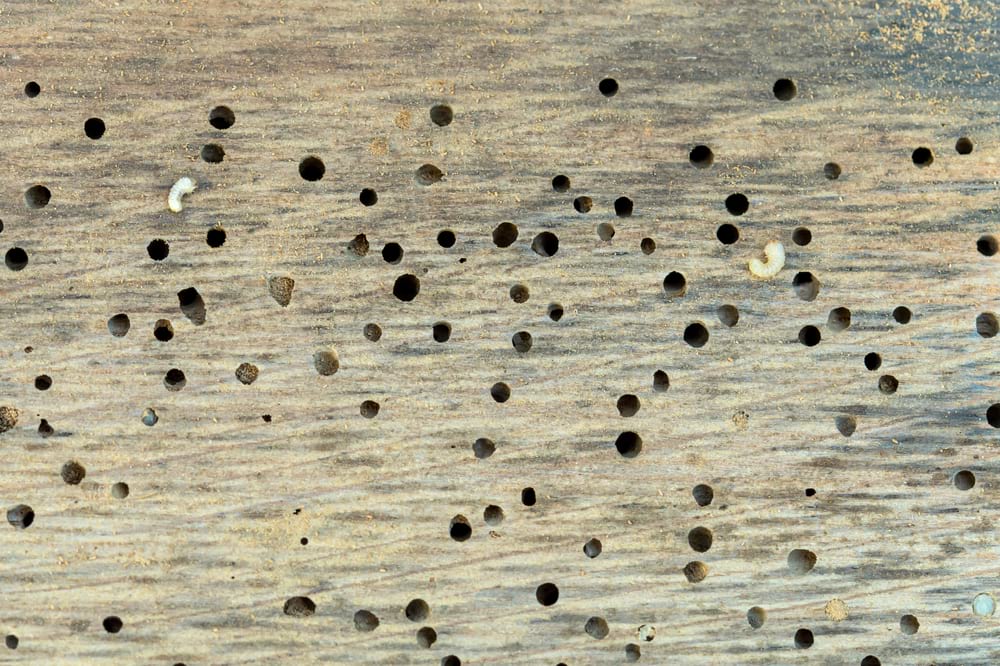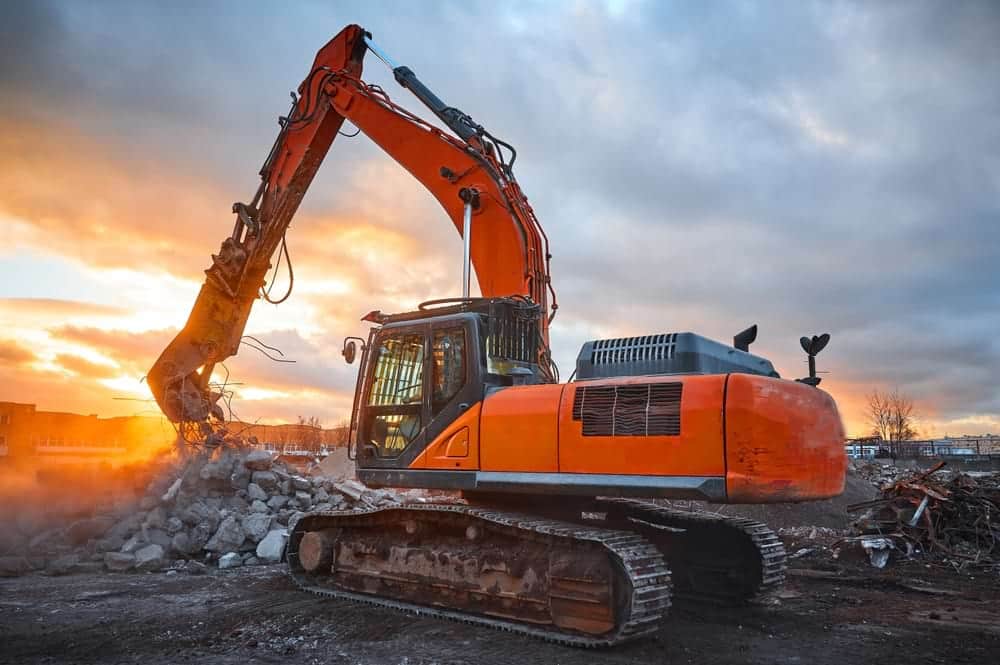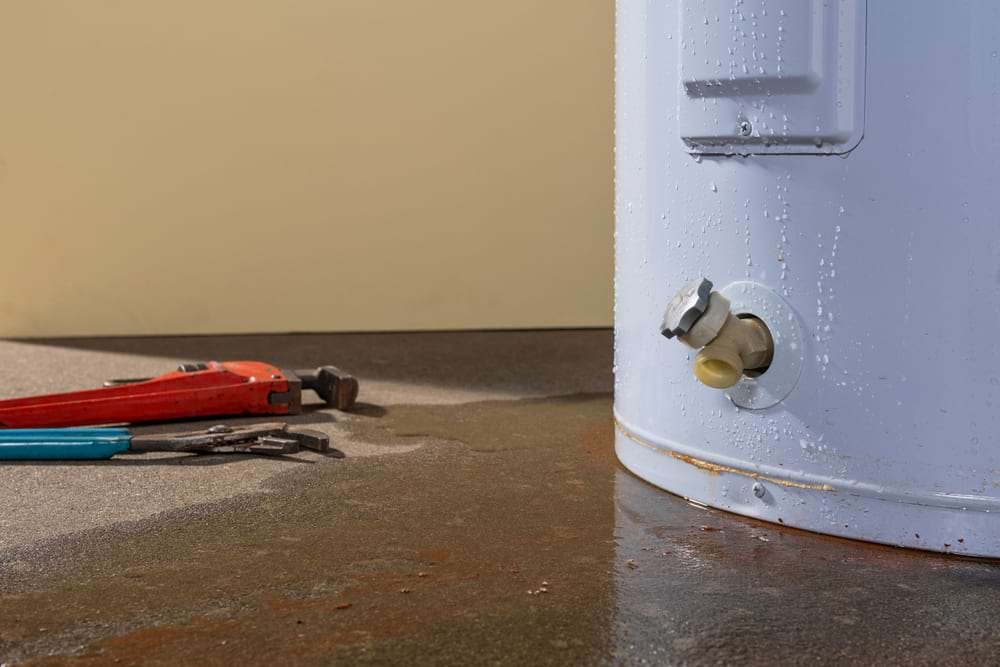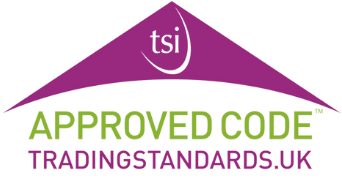Japanese Knotweed is one of the worst problems a homeowner can face.
It can damage and devalue property.
To make things more complicated, there are several plants that look very like it.
In this guide, we’ll look plants commonly mistaken for Japanese knotweed.
What Japanese knotweed looks like
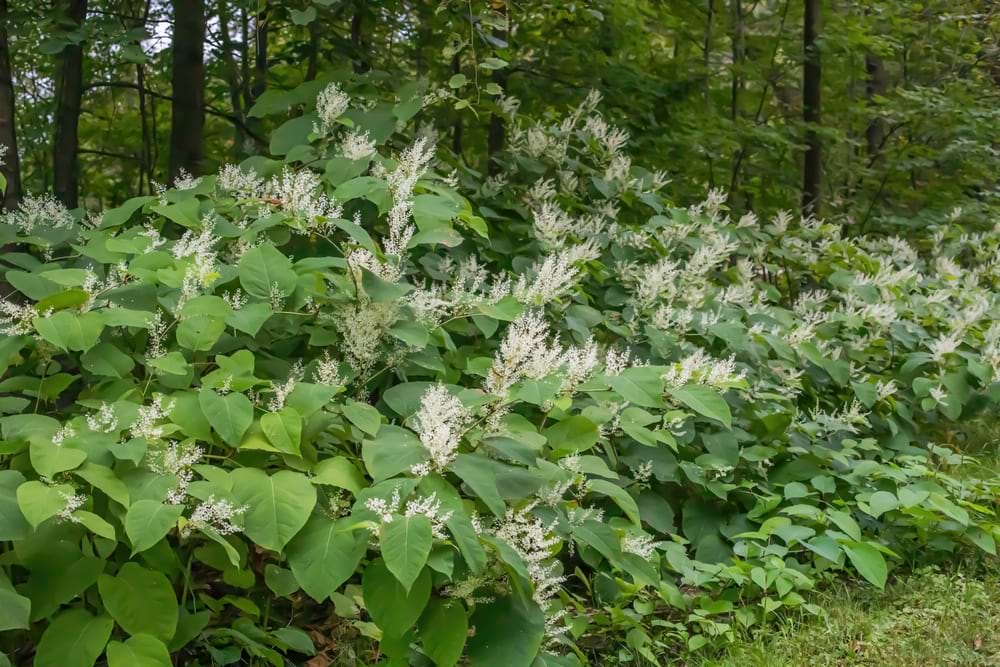
Japanese knotweed has the following features:
- Its flowers are creamy-white
- Its leaves are heart or pear-shaped
- Its stems have zigzag patterns and often grow to 2 – 3 metres tall
- Its roots (known as rhizomes) are orange tinted and can extend up to 3 metres (9.4ft) deep into the ground. These can start growing again after years – or decades – of being dormant.
Japanese knotweed in the UK
There are various estimates on this subject. One expert organisation argues that 5% of homes in the UK are affected by Japanese knotweed.
Others suggest that the number is smaller, at around 2% of residential homes.
Nonetheless, these figures are high enough to check whether you fall within this bracket.
You can be prosecuted in the UK if you allow Japanese knotweed to spread into the wild.
So, if your property has it, you must act.
Damage
Whilst Japanese knotweed is not a threat to people directly, but it can cause property damage to:
- Foundations and walls
- Drains
- Boundaries
- Paving slabs.
It was first brought to the UK in 1850 by a German Botanist.
Damage time frames
Japanese knotweed grows extremely quickly, at around 10cm per day.
This means that within 48 hours, it could be noticeable as it grows through cracks.
It also has large underground rhizome (root) networks, which can stay dormant for decades.
Harm can be done in just a few days. It’s then about damage limitation, which is acting as fast as possible.
7 plants that look like Japanese Knotweed
1. Bindweed
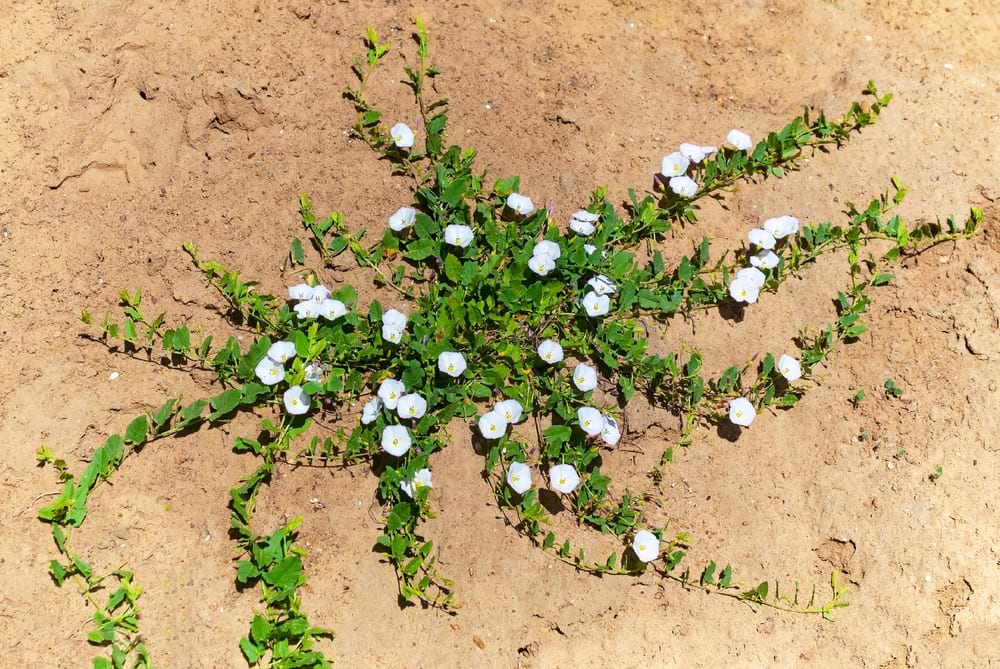
Bindweed is often mistaken for Japanese Knotweed due to its similar heart-shaped leaves. There are two types of it:
- Field bindweed: A smaller variety, with pink and white flowers
- Hedge bindweed: Larger, with white flowers
Unlike Japanese knotweed, Bindweed is a climbing plant. It twists around other plants and structures.
It also has large pink and white flowers. These are easily distinguished from the clustered flowers that bloom on Japanese knotweed.
Because of its perennial root system, Bindweed can live a long time. It is difficult to get rid of without professional intervention.
With the right treatment, you can resolve the problem within a year.
2. Russian vine

Russian vine (also known as Bukhara fleeceflower) is a close relative of Japanese Knotweed.
It has similar shaped leaves and similar looking flowers. It can also cross-pollinate with Japanese Knotweed to create a fearsome hybrid plant.
The biggest difference is that, like Bindweed, Russian Vine is a climbing plant. It doesn’t grow directly upwards like Japanese Knotweed does.
Russian Vine grows fast and can suffocate other plants in proximity. But it’s a lot less persistent than Japanese knotweed and can removed easier.
3. Broad-leaved dock

Broad-leaved dock (also known as bitter dock) is part of the same family as Japanese Knotweed.
They share a few key similarities, such leaf and flower shape, and speed of growth.
However, broad-leaved dock stems are fluted and shorter than knotweed plants. The plant itself is also shorter than Japanese Knotweed.
If you’re still unsure, snap open the stems. If they contain a foam-like substance, you can be sure it’s not Japanese knotweed (which has hollow stems).
While broadleaved dock is a nuisance, it’s easily eradicated with a few rounds of herbicide.
4. Himalayan balsam

Himalayan balsam is a fast-growing but non-invasive plant.
The stems are also hollow with the leaves arranged in a similar way to the Japanese knotweed. So it’s easy for alarm bells to ring when it’s spotted at the foot of your garden.
What’s more, Himalayan balsam can grow to a similar height and is also often found near watercourses.
The leaves on a Himalayan balsam are much longer and thinner than knotweed leaves. And they form large pink hooded flowers (which bloom during the summer).
5. Bamboo

Whilst bamboo doesn’t look a lot like Japanese knotweed, the shoots are similar.
And many early signs of Japanese knotweed are mistaken for pre-planted bamboo.
Bamboo also grows very quickly and high (as high – or higher than – Japanese knotweed).
However, bamboo leaves are long and thin. It is also a lot stronger than Japanese Knotweed, which will easily break with force.
6. Red bistorts

Red bistorts is a popular decorative garden plant related to Japanese Knotweed.
Like Japanese knotweed, its hollow stems divide into nodes. And its leaves are alternately arranged along its stems. (though Red Bistorts stems are usually much thinner).
Red bisorts’ flowers range from pink to reddish-purple. And its stems are thinner than Japanese knotweed.
7. Heart-leaved houttuynia

Heart-leaved houttuynia is commonly mistaken for Japanese knotweed. Like Japanese Knotweed, this perennial can spread through its rhizomes.
It also has heart-shaped leaves (hence the name). These are similar in shape and size to that of the Japanese knotweed.
Unlike Japanese knotweed, it doesn’t usually grow past 30 cm (11 inches) in height. And it has tiny yellow flowers as opposed to white flowers.
Removal costs
Getting rid of Japanese knotweed in the UK usually costs a couple of thousand pounds.
About £2,000 is typical when you hire a qualified, experienced expert.
If you find it, it’s your legal obligation to deal with Japanese knotweed. And this expense for removing it is often a wise investment.
Since a management plan will improve the value of your property when you sell.
Removing Japanese Knotweed
1. Experts and regulation
You should hire an expert because it’s a complicated process. The only exception is if you have the skills and experience to do it yourself.
For instance, keep in mind that complicated ‘red tape’ may apply to your situation, such as:
- Getting a certificate of competence for herbicide use
- Carrying out an official assessment
- Applying for permission – if the area is protected, or the plants are near water.
2. DIY removal
You should not try to get rid of Japanese knotweed unless you have the relevant expertise and experience.
If you don’t, you’re more likely to make a mistake, and cause it to spread into the wild. This is against the law in the United Kingdom.
Always hire an expert unless you are a trained professional yourself.
3. Chemical attacks
Step one usually involves spraying the stems with chemicals. It’s crucial that you only use approved herbicides to do this.
You can find more information on the UK government website or speak to a consultant.
One spray is not enough. You need to do this regularly over a sustained period. It often takes around 3 years to get rid of Japanese knotweed altogether.
4. Burn or bury
You’ll need to dispose of the Japanese knotweed at the end of this process.
Burying it or burning it are two possible solutions. Speak to an expert for more.
Japanese knotweed in the winter
Japanese knotweed goes dormant during the winter. This means that it’s unlikely to grow from scratch during this period.
However, this doesn’t mean homeowners are safe in winter…
During the colder months, the appearance of Japanese Knotweed changes slightly.
It loses its leaves and flowers. Because of this, its brown canes become more visible.
It doesn’t grow during the winter, but it doesn’t die, either. Instead, It enters a period of dormancy during this time.
Its underground rhizomes (horizontal stems that sprout lateral shoots) will, once the weather gets warmer in spring, starts to grow again.
Mortgages on house with Japanese knotweed
Getting a mortgage on a house with Japanese knotweed is very difficult.
But it is technically possible.
You’ll need to follow several steps to get a mortgage. This involves paying for an expert assessment.
This should involve a description of the situation and a clear management plan for how you’ll get rid of it.
If you get all this done, some lenders may be willing to offer you a mortgage.
However, they could feel better if they take precautions in other ways, such as a higher interest rate or collateral.
Japanese knotweed & house value
Japanese knotweed can significantly reduce your property’s value by 10 – 20%.
How much it reduces it depends on the extent of its growth and damage.
A 20% reduction in value is typical when the problem is terrible and you haven’t taken steps to mitigate it.
You often can’t get a mortgage on your house in this situation. This means that a cash buyer will be needed.
If you are in the process of removing it, and the problem isn’t pervasive and hasn’t caused damage, a reduction of around 10% or 15% is typical.

